Welcome to the Amira-Avizo Software Use Case Gallery
Below you will find a collection of use cases of our 3D data visualization and analysis software. These use cases include scientific publications, articles, papers, posters, presentations or even videos that show how Amira-Avizo Software is used to address various scientific and industrial research topics.
Use the Domain selector to filter by main application area, and use the Search box to enter keywords related to specific topics you are interested in.
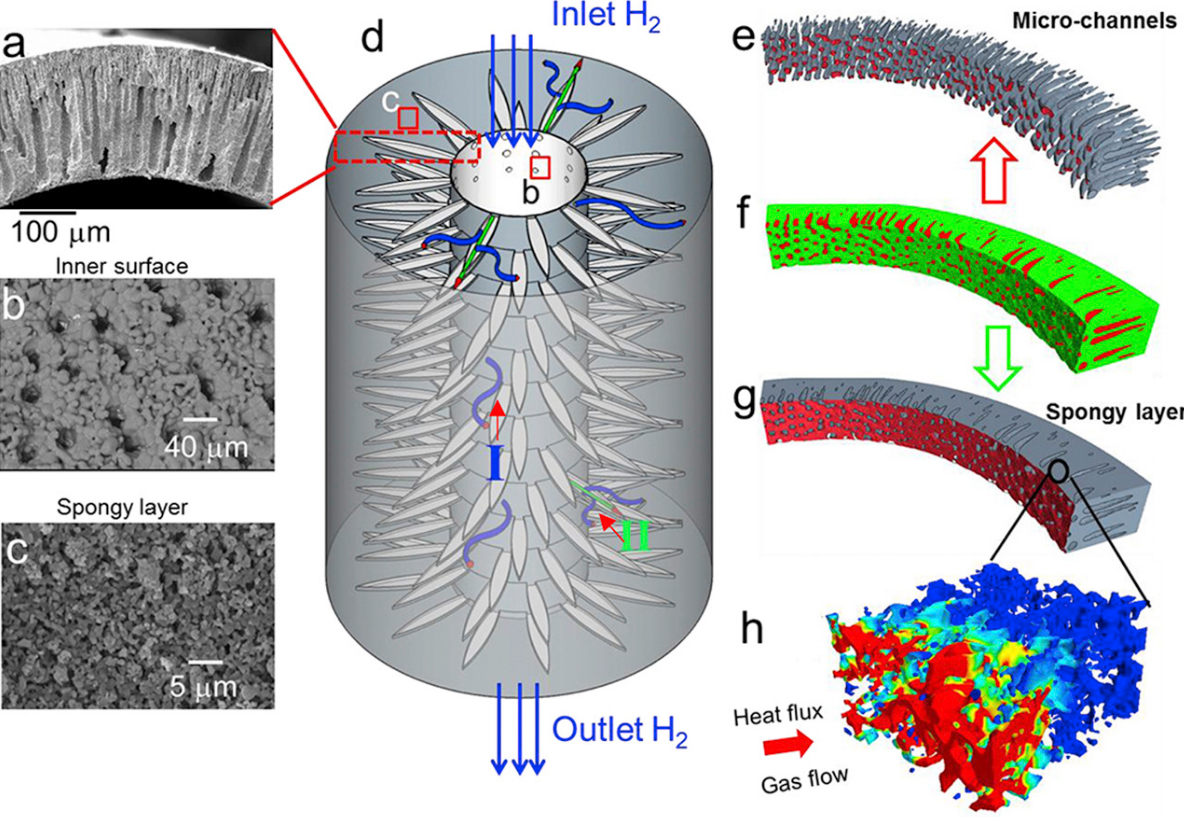
Our parametric study shows that increasing the porosity in the spongy layer beyond 10% enhances the effective transport parameters of the spongy layer at an exponential rate, but linearly for the full anode. For the first time, local and global mass transport properties are correlated to the microstructure, which is of wide interest for rationalizing the design optimization of SOFC electrodes and more generally for hierarchical materials in batteries and membranes.
Read more
Xuekun Lu, Oluwadamilola O. Taiwo, Antonio Bertei, Tao Li, Kang Li, Dan J.L. Brett, Paul R.Shearing
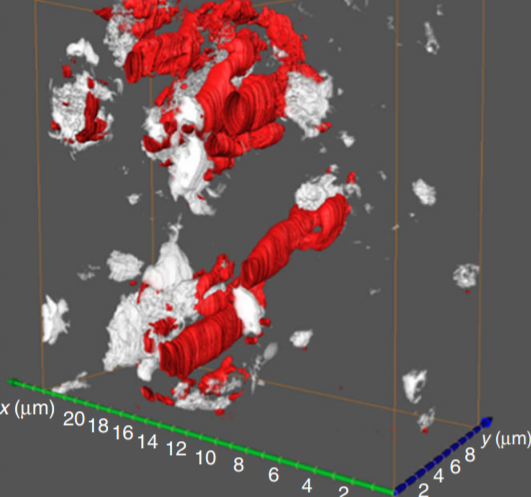
Durable and self-hydrating tungsten carbide-based composite polymer electrolyte membrane fuel cells
Proton conductivity of the polymer electrolyte membranes in fuel cells dictates their performance and requires sufficient water management. Here, we report a simple, scalable method to produce well-dispersed transition metal carbide nanoparticles. We demonstrate that these, when added as an additive to the proton exchange Nafion membrane, provide significant enhancement in power density and durability over 100 hours, surpassing both the baseline Nafion and platinum-containing recast Nafion ... Read more
Weiqing Zheng, Liang Wang, Fei Deng, Stephen A. Giles, Ajay K. Prasad, Suresh G. Advani, Yushan Yan & Dionisios G. Vlachos
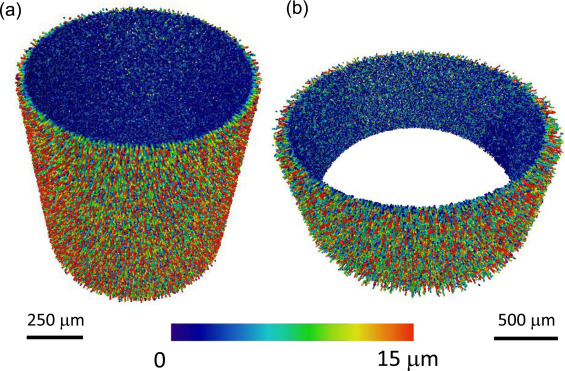
In this study, a series of alumina hollow fibers have been prepared with varied polymer binder (polyethersulfone, PESf) concentration and new polymer-based internal coagulant (aqueous solution of polyvinyl alcohol, PVA). For the first time, the micro-channels were characterized in 3D using X-ray CT to determine micro-channel densities and diameters in the radial direction, as well as the 2D measurement of the pore size in the sponge-like layer.
Read more
Tao Li, Xuekun Lu, Bo Wang, Zhentao Wu, Kang Li, Dan J.L. Brett, Paul R. Shearing
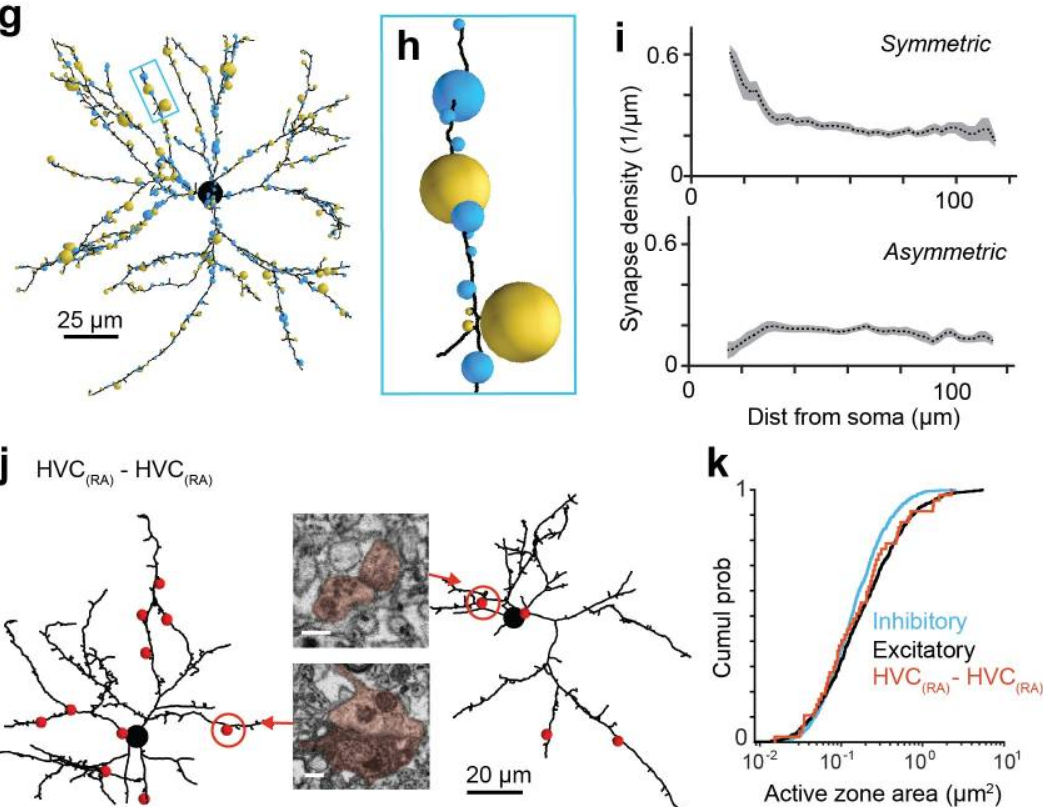
EM connectomics reveals axonal target variation in a sequence-generating network
The sequential activation of neurons has been observed in various areas of the brain, but in no case is the underlying network structure well understood. Here we examined the circuit anatomy of zebra finch HVC, a cortical region that generates sequences underlying the temporal progression of the song. We combined serial block-face electron microscopy with light microscopy to determine the cell types targeted by HVC(RA) neurons, which control song timing. Close to their soma, axons... Read more
Jörgen Kornfeld, Sam E Benezra, Rajeevan T Narayanan, Fabian Svara, Robert Egger, Marcel Oberlaender, Winfried Denk, Michael A Long
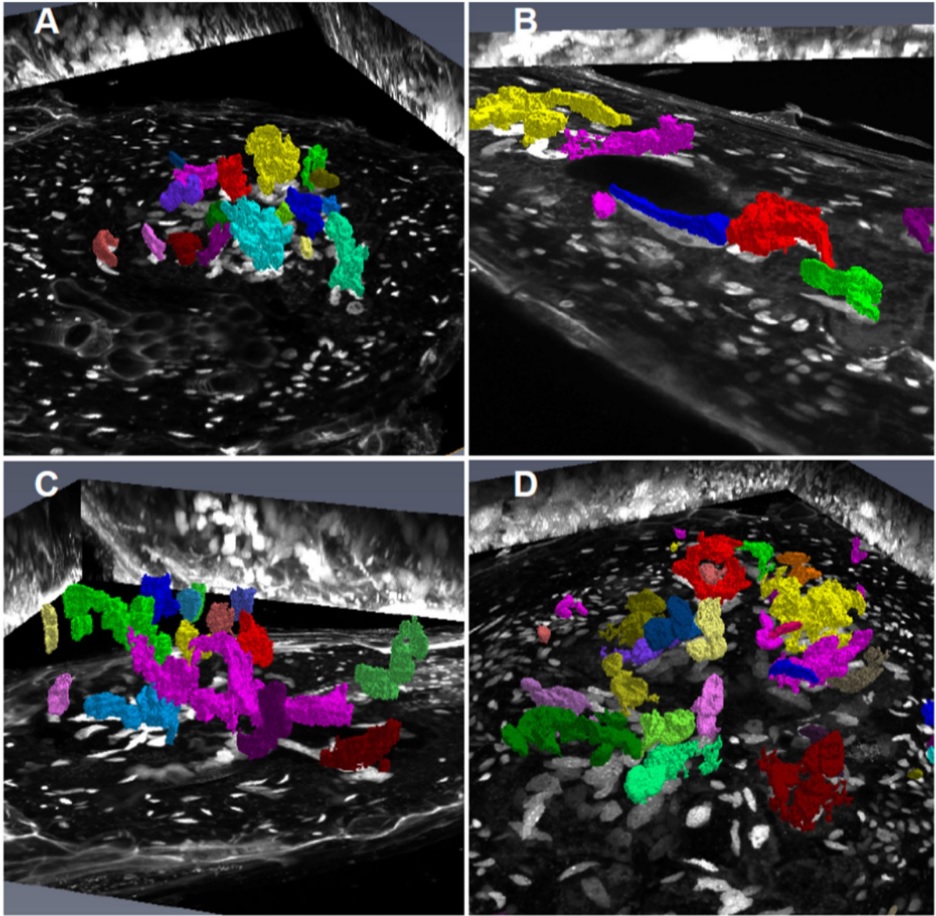
Root-knot nematodes induce galls that contain giant-feeding cells harboring multiple enlarged nuclei within the roots of host plants. It is recognized that the cell cycle plays an essential role in the set-up of a peculiar nuclear organization that seemingly steers nematode feeding site induction and development. Functional studies of a large set of cell cycle genes in transgenic lines of the model host Arabidopsis thaliana have contributed to better understand the role of the cell cycle comp... Read more
Antonino de Souza Junior José Dijair, Pierre Olivier, Coelho Roberta R., Grossi-de-Sa Maria F., Engler Gilbert, de Almeida Engler Janice / Institut National de la Recherche Agronomique, Université Côte d’Azur, Centre National de la Recherche Scientifique, Institut Sophia Agrobiotech, Sophia-Antipolis, France
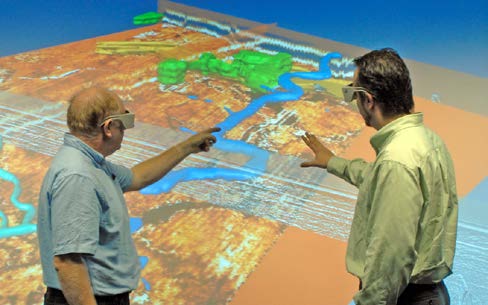
The University of Birmingham uses Avizo software to explore the North Sea as it was 10,000 years ago
The IBM Visual and Spatial Technology Centre (VISTA) specialize in large scale data capture, analysis and visualization for the Arts and Humanities at the University of Birmingham, UK. The VISTA Centre supports interdisciplinary academic research and application development for visualization, spatial analysis and imaging using state-ofthe- art technology.
Avizo software is a fundamental tool that provides new opportunities for data... Read more
IBM Visual and Spatial Technology Centre, Institute of Archaeology, Birmingham Archaeology, University of Birmingham, UK
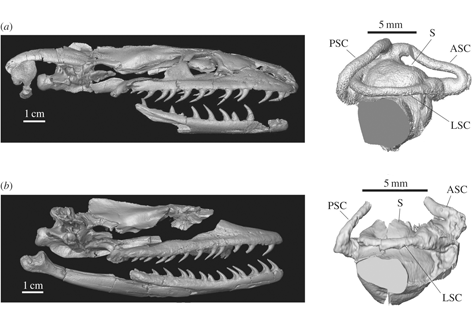
Madtsoiids are among the most basal snakes, with a fossil record dating back to the Upper Cretaceous (Cenomanian). Most representatives went extinct by the end of the Eocene, but some survived in Australia until the Late Cenozoic. Yurlunggur and Wonambi are two of these late forms, and also the best-known madtsoiids to date. A better understanding of the anatomy and palaeoecology of these taxa may shed light on the evolution and extinction of this poorly known group of s... Read more
Alessandro Palci, Mark N. Hutchinson, Michael W. Caldwell, John D. Scanlon, Michael S. Y. Lee

Volcanogenic Pseudo-Fossils from the ∼3.48 Ga
The ∼3.48 billion-year-old Dresser Formation, Pilbara Craton, Western Australia, is a key geological unit for the study of Earth’s earliest life and the habitats it occupied. Here, we describe a new suite of spheroidal to lenticular microstructures that morphologically resemble some previously reported Archean microfossils. Correlative microscopy shows that these objects have a size distribution, wall ultrastructure, and chemistry that are incompatible with a microfossil origin and in... Read more
Wacey David , Noffke Nora , Saunders Martin , Guagliardo Paul , and Pyle David M
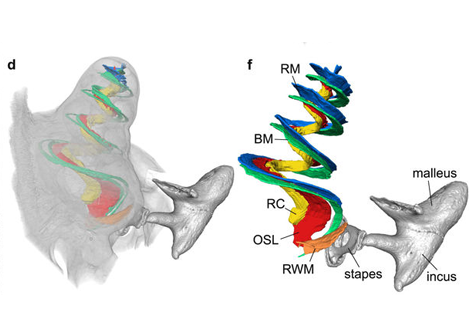
Propagation-based phase-contrast x-ray tomography of cochlea using a compact synchrotron source
We demonstrate that phase retrieval and tomographic imaging at the organ level of small animals can be advantageously carried out using the monochromatic radiation emitted by a compact x-ray light source, without further optical elements apart from source and detector. This approach allows to carry out microtomography experiments which – due to the large performance gap with respect to conventional laboratory instruments – so far were usually limited to synchrotron sources. We dem... Read more
Mareike Töpperwien, Regine Gradl, Daniel Keppeler, Malte Vassholz, Alexander Meyer, Roland Hessler, Klaus Achterhold, Bernhard Gleich, Martin Dierolf, Franz Pfeiffer, Tobias Moser & Tim Salditt
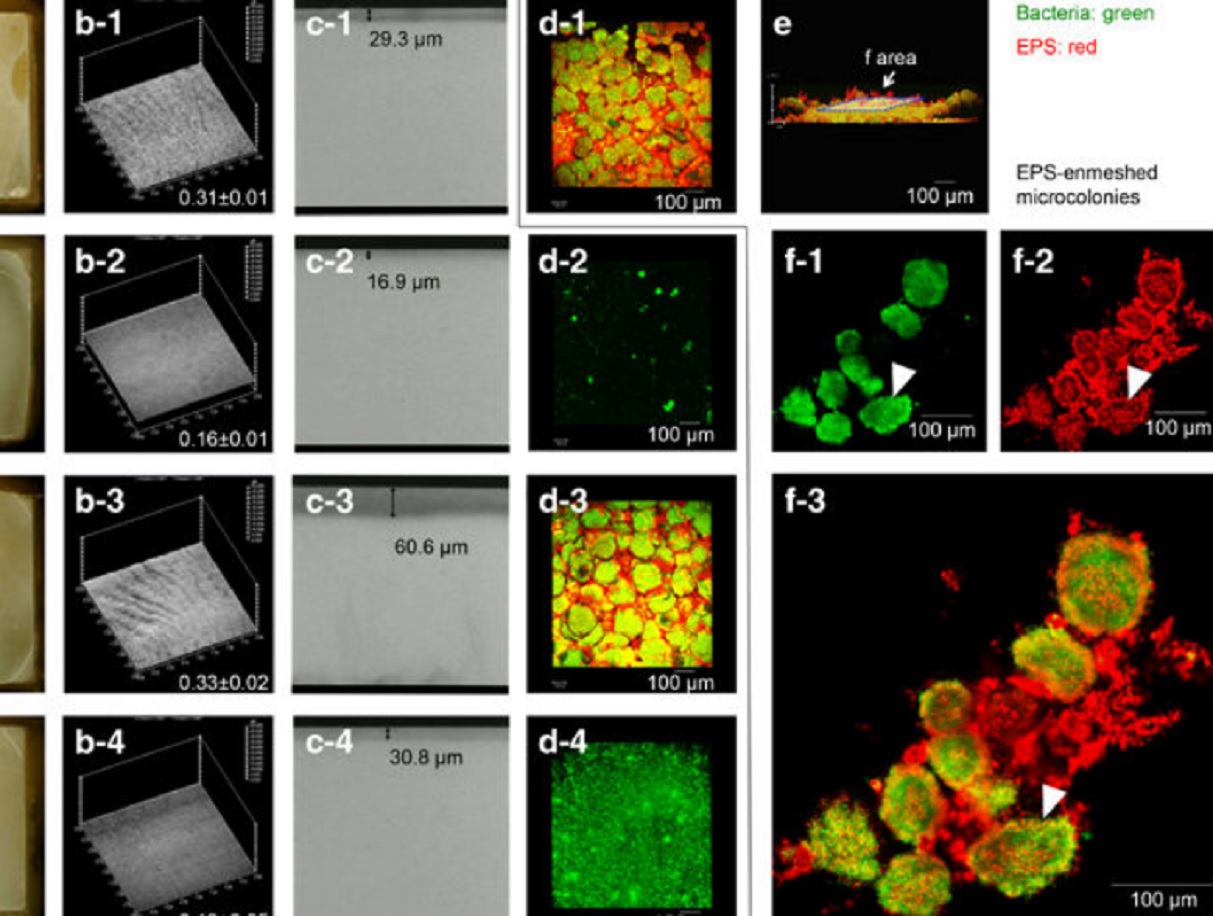
Acidic microenvironments created by bacterial clusters thriving in a polysaccharide matrix could be behind localized tooth decay. Jin Xiao of the University of Rochester Medical Center and Geelsu Hwang of the University of Pennsylvania with colleagues in the US mapped acidity changes across tooth enamel caused by the microstructure of dental plaque: a film of bacteria and the polysaccharide matrix they secrete. Using fluorescence microscopy, they studied the 3D architecture of plaque that for... Read more
Jin Xiao, Anderson T Hara, Dongyeop Kim, Domenick T Zero, Hyun Koo et al.
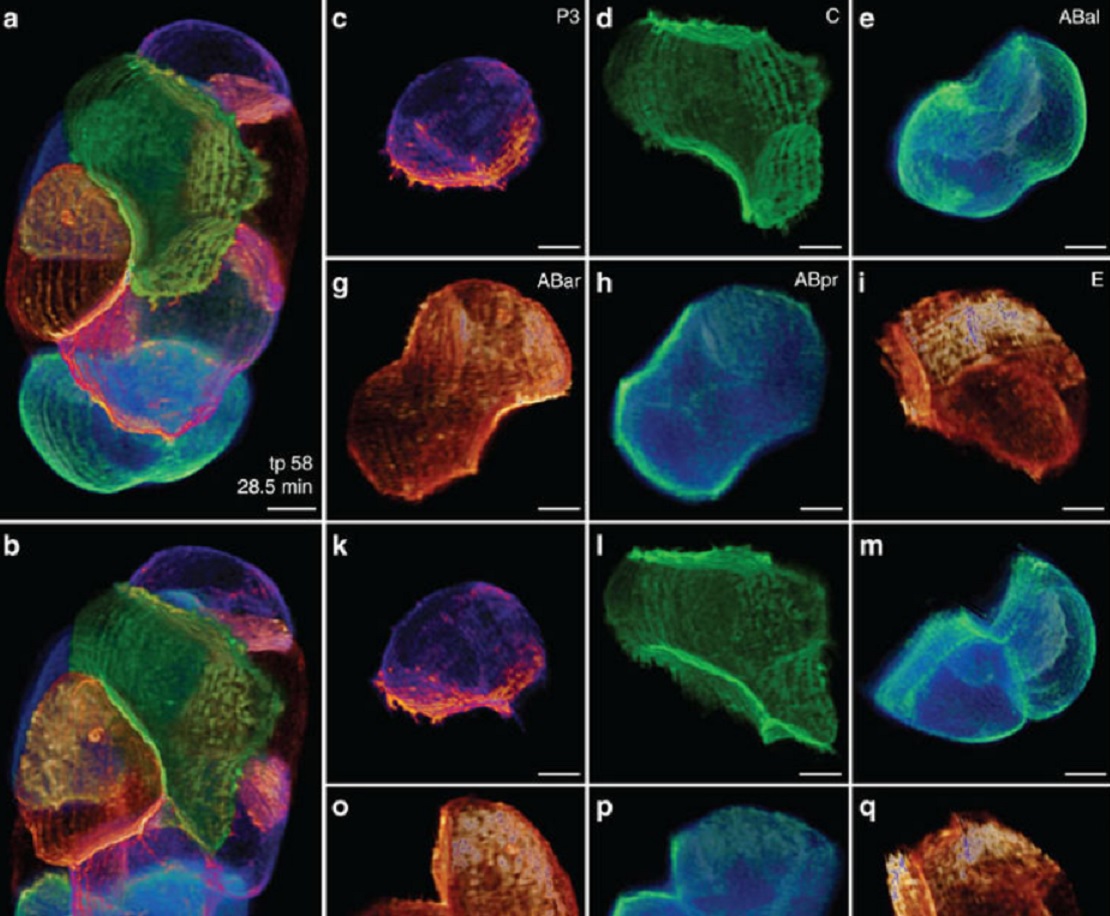
Despite the progress made in selective plane illumination microscopy, high-resolution 3D live imaging of multicellular specimens remains challenging. Tiling light-sheet selective plane illumination microscopy (TLS-SPIM) with real-time light-sheet optimization was developed to respond to the challenge…
Read more
Qinyi Fu, Benjamin L. Martin, David Q. Matus, Liang Gao
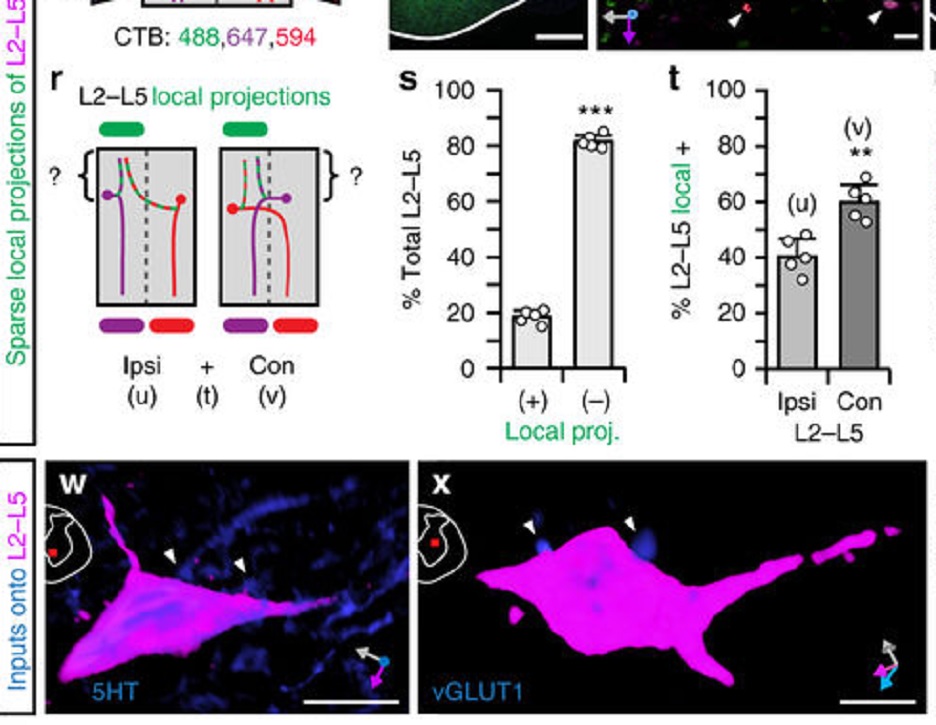
Neural circuitry in the lumbar spinal cord governs two principal features of locomotion, rhythm and pattern, which reflect intra- and interlimb movement. These features are functionally organized into a hierarchy that precisely controls stepping in a stereotypic, speed-dependent fashion. Here, we show that a specific component of the locomotor pattern can be independently manipulated…
Read more
Amanda M. Pocratsky, Darlene A. Burke, Johnny R. Morehouse, Jason E. Beare, Amberly S. Riegler, Pantelis Tsoulfas, Gregory J. R. States, Scott R. Whittemore & David S. K. Magnuson
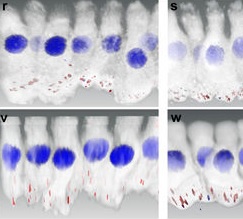
Noise induced hearing loss (NIHL) is a disease that affects millions of Americans. Identifying genetic pathways that influence recovery from noise exposure is an important step forward in understanding NIHL. The transcription factor Foxo3 integrates the cellular response to oxidative stress and plays a role in extending lifespan in many organisms, including humans. Here we show that Foxo3 is required for auditory function after noise exposure in a mouse model system, measured by ABR…Read more
Felicia Gilels, Stephen T. Paquette, Holly J. Beaulac, Anwen Bullen & Patricia M. White
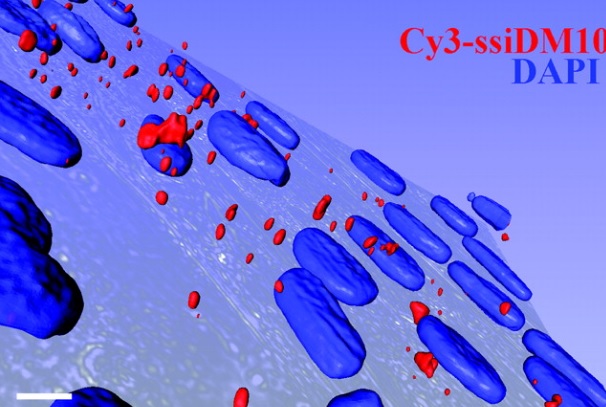
This paper demonstrates for the first time down-regulation of the endogenous nuclear retained mutant DMPK mRNAs targeted with lentivirus-delivered short hairpin RNAs (shRNAs). This nuclear RNAi(-like) phenomenon was not observed when synthetic siRNAs were delivered by cationic lipids, suggesting either a link between processing of the shRNA and nuclear import or a separate pathway for processing shRNAs in the nuclei.
Read more
Marc-André Langlois, Christelle Boniface, Gang Wang, Jessica Alluin, Paul M. Salvaterra, Jack Puymirat, John J. Rossi, Nan Sook Lee
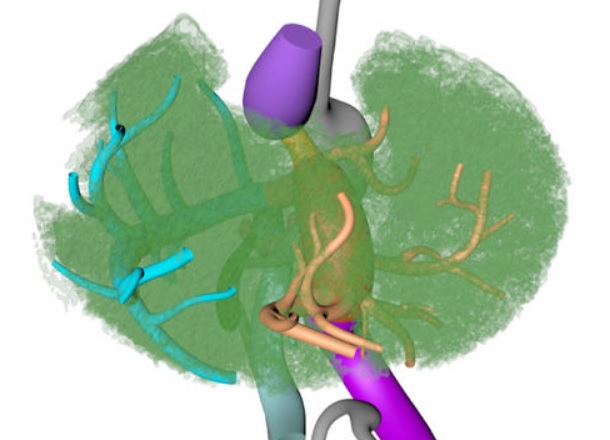
Couinaud based his well-known subdivision of the liver into (surgical) segments on the branching order of portal veins and the location of hepatic veins. However, both segment boundaries and number remain controversial due to an incomplete understanding of the role of liver lobes and vascular physiology on hepatic venous development. Human embryonic livers (5–10 weeks of development) were visualized with Amira 3D-reconstruction and Cinema 4D-remodeling software.
Read more
Jill P. J. M. Hikspoors, Mathijs M. J. P. Peeters, Nutmethee Kruepunga, Hayelom K. Mekonen, Greet M. C. Mommen, S. Eleonore Köhler & Wouter H. Lamers
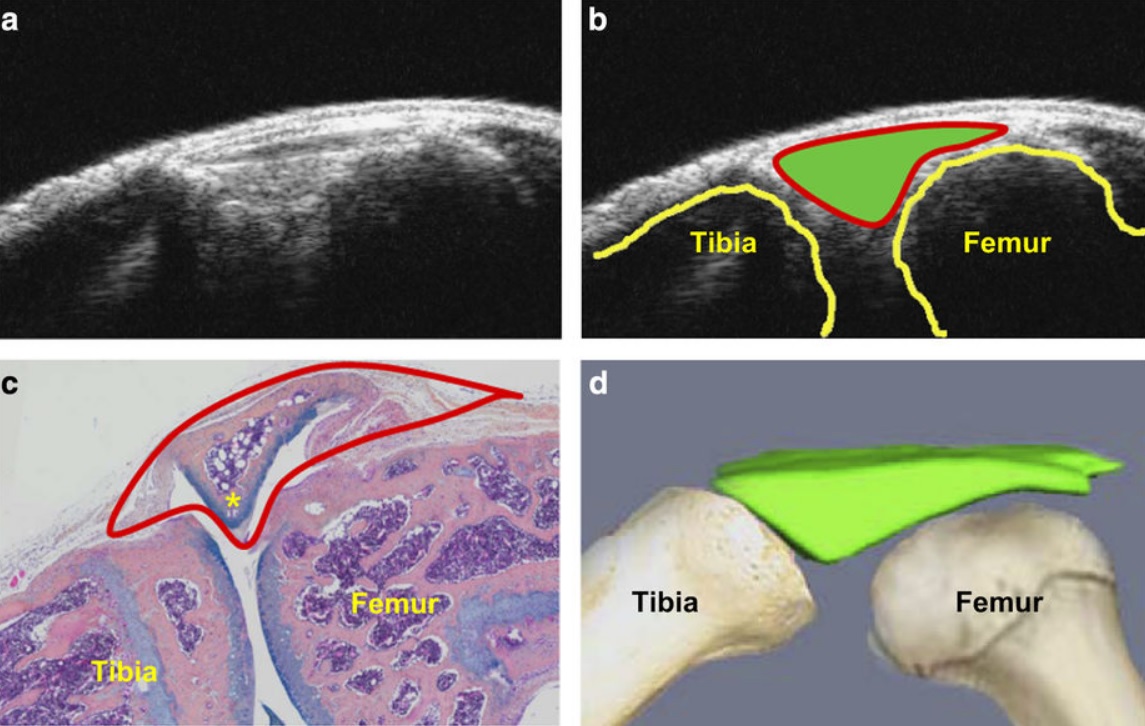
Ultrasound could be a fast and cost-effective means of assessing joint changes in mouse models of posttraumatic osteoarthritis (PTOA). Such models are essential for understanding the biology of this degenerative joint disease and developing new treatments, but noninvasive methods of evaluating disease activity are lacking. Because ultrasound can visualize both joint space volumes and blood flow in the joints, it could provide an alternative to microscopic examination of tissue, assuming it ac... Read more
Hao Xu, Echoe M Bouta, Ronald W Wood, Edward M Schwarz, Yongjun Wang & Lianping Xing
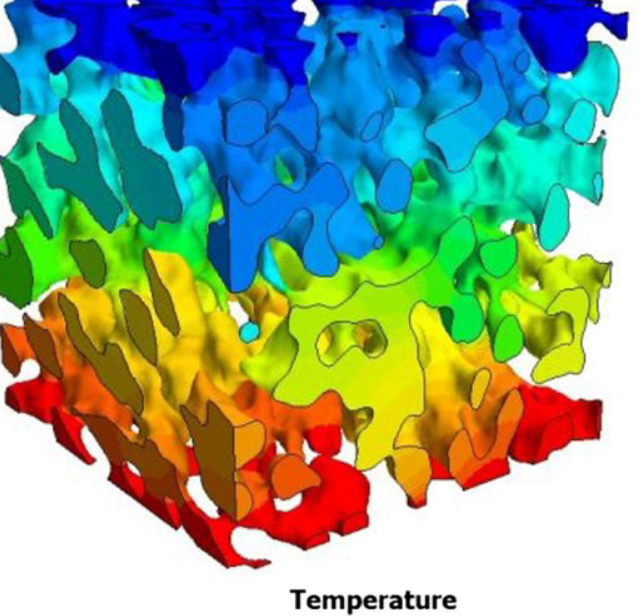
Tortuosity in electrochemical devices: a review of calculation approaches
Here, a review of tortuosity calculation procedures applied in the field of electrochemical devices is presented to better understand the resulting values presented in the literature. Visible differences between calculation methods are observed, especially when using porosity–tortuosity relationships and when comparing geometric and flux-based tortuosity calculation approaches.
Read more
Bernhard Tjaden, Dan J. L. Brett, Paul R. Shearing
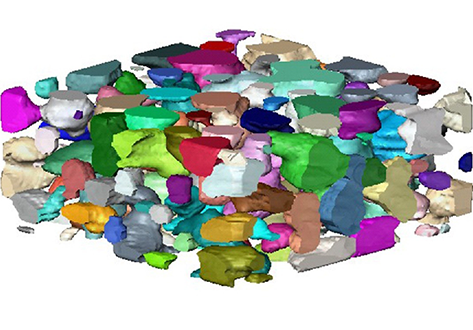
Physical characteristics critical to chromatography including geometric porosity and tortuosity within the packed column were analysed based upon three dimensional reconstructions of bed structure in-situ. Image acquisition was performed using two X-ray computed tomography systems, with optimisation of column imaging performed for each sample in order to produce three dimensional representations of packed beds at 3 μm resolution.
Read more
Department of Biochemical Engineering, University College London | Pall Life Sciences, Portsmouth | Electrochemical Innovation Lab, Department of Chemical Engineering, University College London
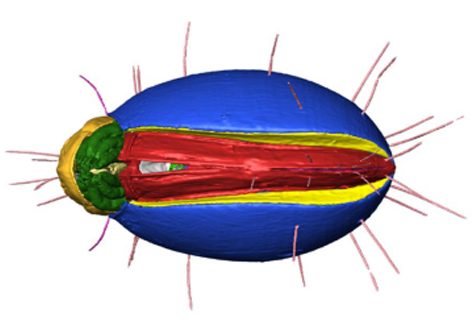
The NOVA project: maximizing beam time efficiency through synergistic analyses of SRµCT data
Beamtime and resulting SRμCT data are a valuable resource for researchers of a broad scientific community in life sciences. Most research groups, however, are only interested in a specific organ and use only a fraction of their data. The rest of the data usually remains untapped. By using a new collaborative approach, the NOVA project (Network for Online Visualization and synergistic Analysis of tomographic data) aims to demonstrate, that more efficient use of the valuable beam time is possi... Read more
The international society for optics and photonics (SPIE)
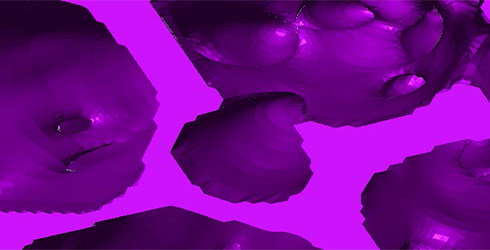
FAMU uses Avizo software to visualize and understand heat transfer and fluid flow
The CHEFF (Computational Heat Fluid Flow) Research group at Florida Agricultural & Mechanical University is using computational fluid dynamics to model flow and heat transfer in various engineering applications for industry, government and the private sector. The primary goal of this research is to first examine and then enhance the thermal performance of current and future low-density reticulated porous media, and explore their use as heat sinks in high power electronics (computer chips... Read more
CHEFF Research Group at Florida Agricultural & Mechanical University: Dr. G.D. Wesson, Professor of Chemical Engineering/Biological Agricultural Systems Engineering, Shawn Austin (Graduate student), Shari Briggs (Graduate student), Mellissa McCole (Graduate student), David Mosley (Graduate student)
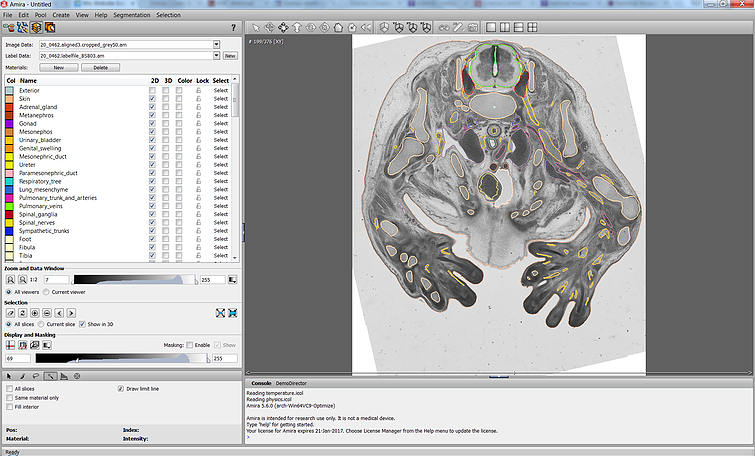
The Academic Medical Center (AMC) uses Amira to build a 3D Atlas for Human Embryology
The 3D Atlas of Human Embryology project was funded by the Academic Medical Center (AMC) in Amsterdam, the Netherlands, in 2009. Since then, over 75 students, under the supervision of embryologists of the Department of Anatomy, Embryology & Physiology, have contributed to this labor-int... Read more
Academic Medical Center